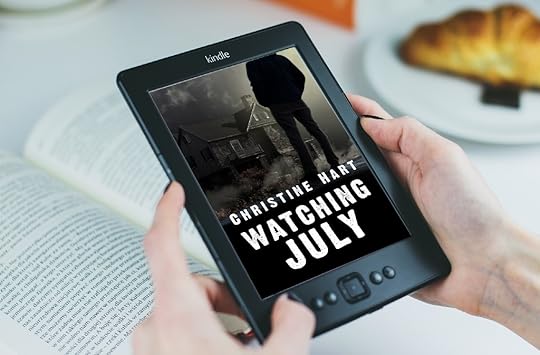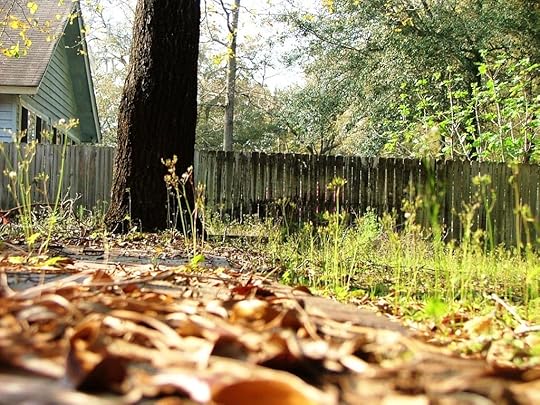Christine Hart's Blog, page 2
February 25, 2017
Self-re-publishing an Out-of-print Title
 Background Photo: pexels.com / Cover Art: ivanzanchetta.com
Background Photo: pexels.com / Cover Art: ivanzanchetta.comAn author’s first novel is often compared to a first baby. I have mixed feelings about this myself, not just as a writer, but as a mother.
Still, there is one major similarity; the arrival of that first book almost always produces moments of pure pride and surges of excitement frozen in the author’s memory.
For almost all of us who write and publish fiction with traditional publishers, the day will come when that first novel goes out of print. What does that mean? The easy answer is that your publisher will not be producing new printed copies of your book. The more complicated (and somewhat painful) subtext is that your book didn’t sell well enough to warrant continued printing.
In the case of a title that only ever came out in print, going out of print would be the death rattle for your book. Only a dedicated fan willing to scan the shelves at used book stores would ever find your work again. Tragic, right? Websites like AbeBooks.com came along during the Internet boom and made it a bit less painful to hear the words “out of print”, but the decision was by no means good news.
Watching July was published in 2008, long after used books could be found online, but a few years before eBooks had become a standard offering. I didn’t know much about AbeBooks, eBooks, or the world of publishing in general in 2008. I was 29 and I worked as a communications specialist. I had very little fiction experience. I did not expect the book to sell well. I had no idea how to market a book or myself. That my book was accepted for professional publication and eventually turned up on bookshelves in Victoria (where I lived at the time) was more than I had ever expected to achieve with fiction.
Sensible authors are aware of the fact that most books fail. We do it anyway. Most manuscripts are rejected and of the select few that make it into print, most of those won’t sell very well or receive awards and critical acclaim.
To my shock and amazement, Watching July won a Moonbeam Gold Medal for mature issues in the YA category. I started to think I could actually write fiction. So I kept going with a few more books.
I hadn’t prepared for a career in fiction before, because I didn’t believe it was a viable option. (I’m still not sure it’s a sensible use of time.) Over time, I developed an understanding of what it takes to market books, and to present myself as an author.
I came to view my fiction work as a business. So I had more than a passing curiosity about how well my books were selling. I knew from a lack of reviews and the broad sales data Amazon provides to authors that the answer wasn’t going to impress me. I also noticed that Canada’s major bookseller, Chapters Indigo, had updated the publisher of Watching July to a house called Three O’Clock Press. Armed with the knowledge that the rights to Watching July had been sold to Canadian Scholars’ Press Inc. in 2009 when my original publisher Sumach Press had been acquired, I started trying to dig up information about sales and perhaps royalties.
I never did connect with anyone from Three O’Clock Press, but CSPI replied to let me know they had re-acquired the rights. Progress! However, Watching July hadn’t sold a copy in years and they would be shifting it out of print. Ouch! I hadn’t expected to dig up a large royalty cheque, but I really hadn’t expected my book baby to be orphaned. It’s not a great analogy. I’m just trying to convey the unhappy feeling of having a book rejected, again, even after you thought it had jumped through all the hoops. The one silver lining was that all rights reverted to me.
While self-re-training for the publishing landscape of 2016 and my first foray into the world of digital-first titles with The Variant Conspiracy, I learned how far self-publishing had come. Gone were the days of self-published authors being uniformly received as unprofessional and circumventing the competitive screening process that weeded out poor quality work.
I also read Arthur Slade’s experience re-publishing his novel Dust. I’m still not sure I’ll ever be ready to tackle self-publishing from start to finish. But publishing a book I already new was ready for market? That sounded like a baby step I could take. So I did.
The new edition of Watching July is now available in print via Createspace. The digital version is on Amazon and Kobo.
Will full control over content, pricing, and promotion prove to be something I want for future books? I’m still not sure.
But I was able to recapture some of that debut novel excitement. That alone was worth the price of admission to the world self-publishing.

Self-re-publishing an Out-of-print Title was originally published in The Fragile Receptacle on Medium, where people are continuing the conversation by highlighting and responding to this story.
February 12, 2017
Funneling Sadness & Anger into Fiction
 Source: pexels.com
Source: pexels.com“Take your broken heart, make it into art.” — Carrie Fisher
As a Canadian, I feel somewhat removed from the situation south of the border. During the last few months, I’ve felt like a small girl watching a grown man scream at his children from across the street. What can I do? Who can I tell? Is there a way to make it stop? To make him go away? I’m not so naive to believe it’s none of my business, but I’m not equipped to intervene.
As an artist, it’s easy to feel this way too, helpless and powerless. I’m not a warrior or an activist, much as I’d like to be. Even if either of those words defined me, I couldn’t bring two small children along for the fight.
So I’ve been doing what I always do when something bothers me, writing. I used to channel worries and concerns into non-fiction essays and feature articles. But since I started writing fiction, I’ve poured those sentiments into new molds. I’ve even been so bold as to believe speculative fiction can do more than entertain, it can spread awareness and open minds.
I’m sure my readers already know that I’ve written about bullying, stalking, LGBT families, alcoholism, dysfunctional families, sexual harassment, environmental decay, corporate power, and immigration. I’ve also written about climate change and refugees, although those stories haven’t yet made their way out of my hard drive and into bookstores.
If there are other artists, writers, creators, and makers out there who feel as useless and ineffective as I do most days, my suggestion is this: keep making art and share it widely. Put aside that fear of rejection that holds you back, ignore the voice in your head that tells you you’re wasting time.
Think of your art like the first ripple in a wave. If someone interacts with your work, he or she may transform, just a little. A child might grow up with your ideas in his or her head, and a beautiful concept could be the seed of change in years to come.

Funneling Sadness & Anger into Fiction was originally published in The Fragile Receptacle on Medium, where people are continuing the conversation by highlighting and responding to this story.
February 3, 2017
The Boy and The Tree
 Source: freeimages.com
Source: freeimages.comThis is not a story about politics or friends. This is a story about how we conceive forms of justice. And how a silent group is a consenting group.
It was a long time ago now, probably 1995 or 96. I was about 16 or 17 years old. My friends and I went to a house party during the summer. And when we got there, we saw a boy tied to a tree. I’m going to call him Smith, not because I’m covering my ass, but because his real name isn’t the point of the story.
Smith was known to just about everyone at the party. The boy who tied Smith to the tree (I’m going to call him Bones because in my memory, he reminds me of the bully from Monster House) said it was justice. Smith had done something — we were never told what the offense was — and being tied to a tree for the night was his punishment. We were supposed to accept it, preferably support it. Others were obviously in agreement with Bones, since Smith was wet and dirty from having drinks poured over him.
I didn’t know Smith very well myself, but I knew enough that I wasn’t shocked to see that he’d pissed off Bones and his buddies. Smith was small and scrawny, while Bones was big and strong. Smith probably hadn’t even fought back while being tied to the tree.
Me being me, I complained to Bones and told him I thought it was offensive. I was told to leave it alone of course. Smith knew what he’d done (probably theft of money or drugs) and wouldn’t be harmed if he cooperated.
I knew I wasn’t going to get anywhere with Bones. I was kind of scared of him myself, having been threatened by him on another occasion for something totally unrelated. So I stayed silent, which I regret.
It bothered me that nobody else spoke up, at least not that I remember. It bothers me now that most of the people at this party hadn’t cared to begin with. What was happening to Smith wasn’t that bad. He’d earned it, after all.
Maybe most of those kids knew why Smith was tied to the tree. Maybe he’d wronged half the party. Memory is a funny thing, and as much as I trust mine, certain elements of that evening are gone.
I’m thinking of it now, distilled to the snapshots of poor Smith, tied up, probably humiliated and afraid. While everyone around him carried on as if he deserved it — or as if he wasn’t even there.
But I mentioned that this story had a point. And the point is this; bullies make terrible judges and leaders. When we let a bully decide what constitutes a crime and how that crime should be punished, the result isn’t justice, it’s just another crime.
As a teen, I felt helpless against bullies. And I feel helpless again now. So I’ll do now what I did then. Which is to write and talk and hope. If the only thing you can do to a bully is tell him you think he’s wrong, it’s better than nothing.

The Boy and The Tree was originally published in The Fragile Receptacle on Medium, where people are continuing the conversation by highlighting and responding to this story.



